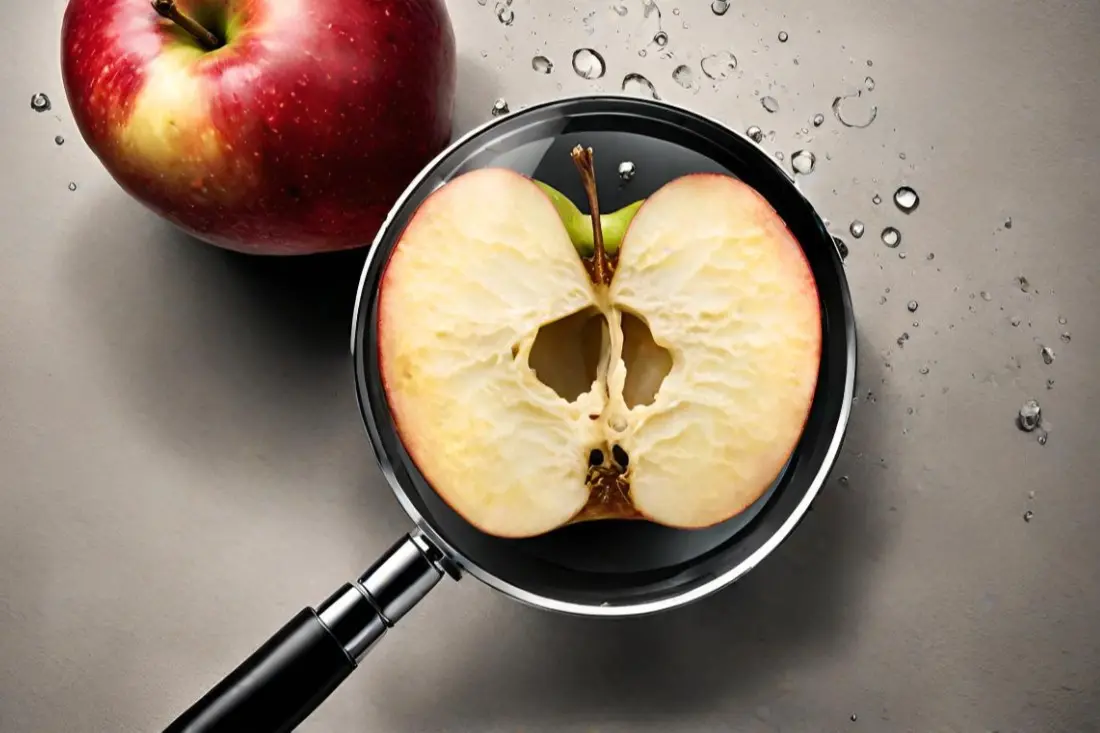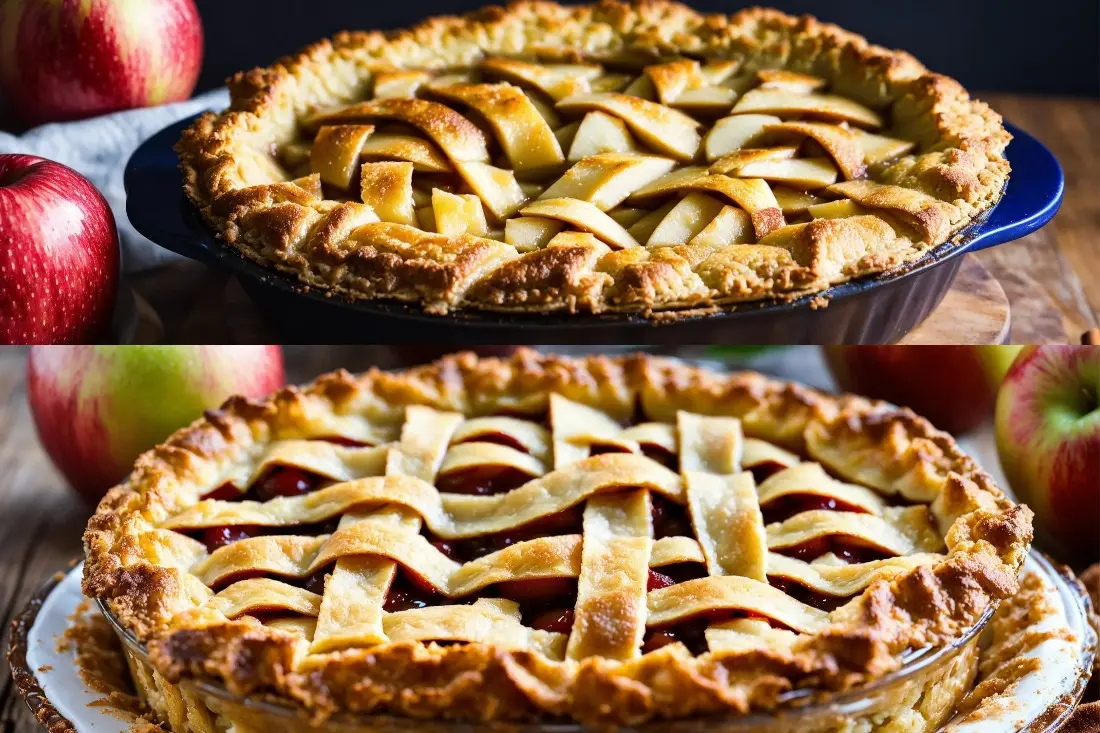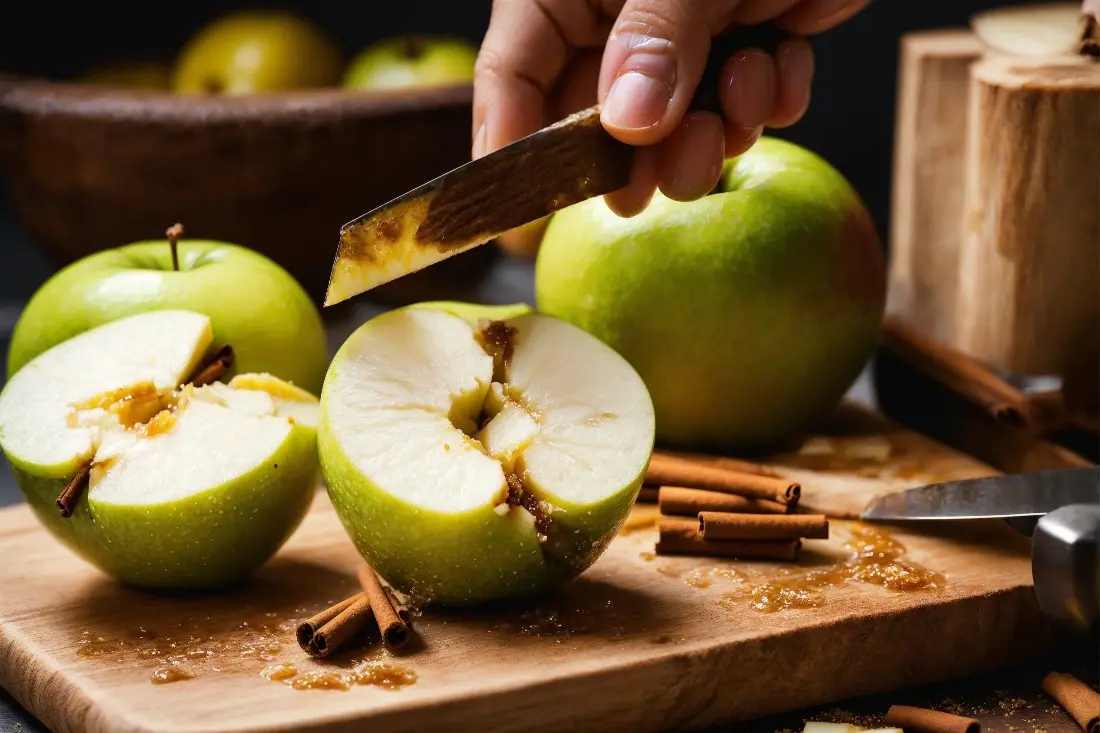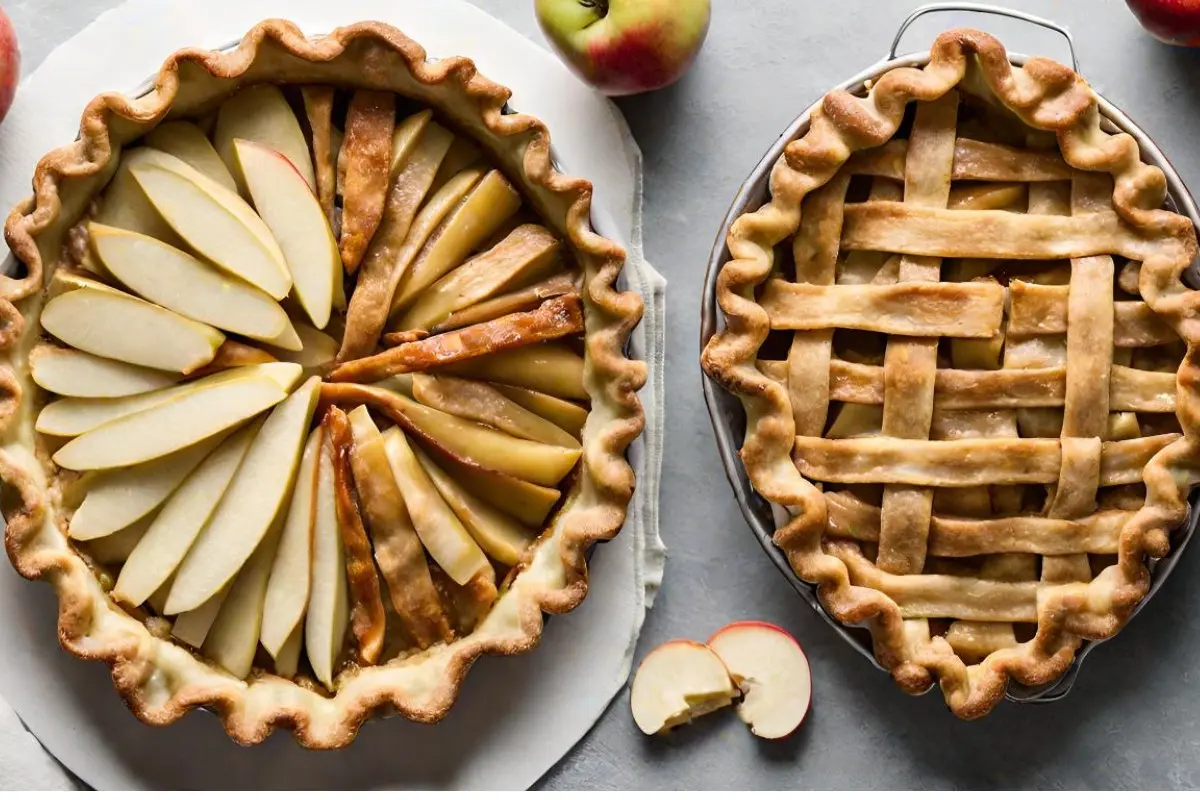Ah, the timeless debate in the world of baking! When crafting the perfect apple pie, one question often stirs up a bit of a culinary quandary: should you cook apples before putting them in a pie? This seemingly simple question opens up a world of considerations, from the texture and flavor of the apples to the overall integrity of the pie. In this detailed exploration, we’ll dive into the pros and cons, the science behind it, and, of course, the beloved apple varieties best suited for your pie-making adventures. Whether you’re a seasoned baker or a novice in the kitchen, this article aims to provide valuable insights and guide you toward making that picture-perfect, delectable apple pie.
The Benefits of Pre-Cooking Apples for Pie Filling
The art of pie making is a dance of flavors and textures, and the leading partner in this dance is undoubtedly the apple. The decision to pre-cook apples before they grace the interior of a pie crust can significantly impact the final product. Let’s waltz through the benefits of this step.
How Pre-Cooking Softens Apples and Reduces Pie Sogginess
First and foremost, pre-cooking apples softens them, reducing the risk of a soggy-bottomed pie, a plight no baker wants to face. Imagine biting into a slice only to be met with a disappointingly limp crust – certainly not the star performance we aim for! Pre-cooking helps evaporate some moisture from the apples, leading to a firmer filling that holds its shape gracefully.
Enhancing the Apple Flavor
Furthermore, this process isn’t just about texture; it’s a flavor enhancer too. When apples are cooked, their flavors intensify, creating a richer and more robust taste profile. This is particularly true for tart apple varieties, which can mellow out beautifully when pre-cooked. It’s akin to a flavor symphony, where each note of sweetness and acidity is perfectly balanced.
Pre-Cooking for a Sturdier Pie
Lastly, let’s talk about structure. Adding raw apples directly to your crust can lead to a culinary faux pas – the dreaded gap between the crust and the filling. Pre-cooking allows apples to lose some of their initial volume, which means no unpleasant surprises of space when you slice into your masterpiece. The result? A pie that’s not only delicious but also holds its form with elegance and grace.
In the realm of pie baking, these benefits of pre-cooking apples certainly make a compelling case. It’s a step that marries the science of cooking with the art of baking, ensuring that each apple pie you bake is not just good, but great. Stay tuned as we delve deeper into this topic, exploring the other side of the coin in the next part.
The Drawbacks of Pre-Cooking Apples
While pre-cooking apples for pie filling has its merits, it’s not all peaches and cream. There are a few sour notes to consider. Let’s peel back the layers and examine the potential drawbacks of this method.
Potential Loss of Flavor and Texture
One of the main concerns is the potential loss of flavor and texture. Apples are nature’s candy; they come packed with natural sweetness and a delightful crunch. However, pre-cooking can sometimes lead to a filling that’s a tad too mushy, losing that quintessential apple essence. After all, you want your pie to sing with flavors, not just hum along.
Nutritional Concerns and Sugar Adjustments
Apples are not just about flavor; they’re a bundle of nutrients too. But here’s the rub: pre-cooking can lead to a loss of some of these nutrients. If you’re a health-conscious baker, this might be a bit of a sticky wicket. Also, cooking alters the natural sweetness of the apples, which means you might find yourself doing a balancing act with the sugar content in your recipe.
Balancing Flavor Loss with Benefits
The key here is to find the sweet spot – balancing the flavor loss against the benefits. It’s a bit like a culinary tightrope walk. You want to achieve that perfect harmony where the apples are cooked just right, retaining their flavor and nutrients while also contributing to a pie that’s structurally sound and scrumptiously good.
So, should you or shouldn’t you pre-cook your apples? It’s a bit like asking whether to add sugar or spice – it depends on your taste and what you’re aiming for in your pie. As we slice further into this topic, keep these considerations in mind. After all, every baker’s journey is unique, and so is every apple pie!
The Science Behind the Texture of Cooked vs. Raw Apples in Pie

When it comes to apple pies, texture plays a leading role. The choice between using cooked or raw apples is more than just a matter of preference; it’s a scientific dance of textures. Let’s don our lab coats and explore the intriguing science behind this.
How Cooking Affects Apple Consistency
Heating apples trigger a fascinating transformation. Their rich pectin content, responsible for that crisp texture, breaks down when heated. This breakdown causes apples to soften, releasing their water-binding capacity. It’s like watching a ballet of molecules, where heat choreographs the change from crisp to tender.
The Texture Spectrum: Soft vs. Crunchy
On the texture spectrum, cooked apples sit on the softer, more tender end, while raw apples bring a crunchier, more robust bite to the pie. This difference is not just a trivial matter; it’s the essence of what makes each apple pie unique. Some palates yearn for that soft, melt-in-your-mouth filling, while others crave the contrasting textures of a flaky crust with a slightly crunchy filling.
The Role of Apple Varieties
The variety of apples also plays a pivotal role in this texture tango. Some apples, like the Granny Smith, hold their ground better against the heat, while others, like McIntosh, are more likely to soften. It’s a delightful dilemma that adds another layer of complexity to your baking decisions.
In summary, whether to cook apples before adding them to a pie crust is not just a question of taste, but a decision influenced by the intricate science of textures and the natural characteristics of apple varieties. As you continue your baking journey, let this knowledge be your guide in creating the perfect apple pie, tailored to your texture preferences.
The Best Apple Varieties for Raw vs. Cooked Pie Filling
In the grand tapestry of apple pie making, not all apples are created equal. The variety of apples you choose can dramatically influence the outcome of your pie. So, let’s take a stroll through the orchard of knowledge and pick out the best apples for your pie, whether you’re going raw or cooked.
Choosing Apples for Raw Pie Filling
For a raw pie filling, where the apples are expected to hold their shape and offer a bit of a bite, firm and crisp varieties shine. Think of the Honeycrisp with its perfect balance of sweetness and tartness, or the ever-popular Granny Smith, known for its delightful tartness and firm texture. The Pink Lady also makes a great choice with its crisp texture and a lovely balance of sweet and tart flavors. These apples don’t just hold up in the baking process; they become the stars of the show.
Best Apples for Cooked Pie Filling
When it comes to cooked pie fillings, where softness and a melding of flavors are key, softer apple varieties take center stage. McIntosh apples, with their tender flesh, break down beautifully when cooked, creating a lusciously smooth filling. Rome and Jonathan apples are also excellent choices, known for their ability to soften nicely while still contributing a rich flavor.
The Joy of Mixing Apple Varieties
And here’s a little baker’s secret: using a mix of apple varieties can bring depth and complexity to your pie. Combining different textures and flavors can create a filling that is not only delicious but also has an interesting character. A mix of tart and sweet, firm and soft, can create a symphony of flavors in each bite.
In the world of apple pies, the choice of apple variety is akin to choosing the right paint for a masterpiece. Whether you go for the firmness of raw apples or the tenderness of cooked ones, the right variety can elevate your pie from good to unforgettable.
Pre-cooking vs. Baking Apples in Pies: A Flavor and Nutrient Comparison

The debate between pre-cooking and baking apples in pies is not just about texture; it’s a dance of flavors and nutrients. Let’s simmer down into the details and compare these two popular methods to understand their impacts on your apple pie.
Flavor Concentration Through Pre-Cooking
Pre-cooking apples can be a game-changer for flavor. This method allows the apples to release their natural juices and caramelize, leading to a more concentrated apple flavor. It’s like the apples are telling their flavor story more vividly. The sugars become more pronounced, and the spices meld beautifully, creating a filling that is rich and deep in taste.
Nutrient Retention in Baking vs. Pre-Cooking
On the flip side, when we talk about nutrients, baking apples directly in the pie tends to retain more of their natural goodness. Vitamin C and other heat-sensitive nutrients are better preserved in this less intense heat environment. So, if you’re looking for a healthier option, baking the apples raw might be your path.
Deciding Between Flavor and Nutritional Value
It’s a bit of a culinary conundrum, isn’t it? Do you go for that intense flavor that pre-cooking offers, or do you keep it wholesome with the nutrient retention of baking? The answer lies in what you value more for your pie – is it the richness of flavor or the natural goodness of the apples?
In conclusion, whether to pre-cook or bake apples in your pie depends on your priorities – flavor or nutrition. Each method has its charm, contributing uniquely to the delightful experience of apple pie eating.
How to Pre-Cook Apples for Perfect Pie Filling
Pre-cooking apples for your pie is an art form, a delicate balance of technique and timing that can elevate your pie from delightful to divine. Let’s explore the different methods to pre-cook apples and ensure your pie filling is nothing short of perfect.
Sautéing Apples
One popular method is sautéing. This involves cooking the apple slices in a bit of butter and sugar until they’re lightly caramelized. It’s a bit like giving the apples a quick dance in the pan, enough to coat them with a rich, sweet layer of flavor. This method adds depth and a subtle complexity to your pie filling.
Simmering in Sugar Syrup
Another technique is simmering the apples in a sugar syrup. This could include flavors like cinnamon, cloves, or other spices to infuse the apples with a delightful aroma and sweetness. Imagine each apple slice soaking up the flavors, becoming plump with the sweet nectar of the syrup.
Boiling in Water or Apple Juice
For a more straightforward approach, boiling the apples in water or apple juice is also an option. This method softens the apples and ensures they won’t shrink or turn mushy during the baking process. It’s a gentler way to coax the apples into the perfect texture for your pie.
Each of these methods has its charm and brings something unique to the table. The choice depends on the flavor profile you’re aiming for in your pie. Remember, pre-cooking your apples is not just about softening them; it’s about infusing them with as much flavor as possible before they make their way into that beautiful crust.
Exploring Different Apple Pie Recipes: Which Ones Require Pre-cooked Apples?
Apple pie, a classic dessert beloved across generations, comes in a delightful array of recipes. Each recipe has its charm, influenced by the choice between pre-cooked or raw apples. Let’s explore this delicious diversity and understand which recipes might call for pre-cooked apples.
Dutch Apple Pie: A Case for Pre-cooked Apples
Consider the Dutch Apple Pie, a delightful variation where the apples are often pre-cooked. In this recipe, apples are simmered with butter, sugar, and spices until they’re tender before being placed into a pre-made crust. This method ensures the apples are soft and the flavors meld perfectly, creating a filling that’s rich and comforting.
Classic American Apple Pie: Raw Apples Take the Stage
On the other hand, the Classic American Apple Pie typically doesn’t require pre-cooked apples. Here, the apples are usually tossed with sugar, spice, and a thickener like flour or tapioca, then placed directly into the pie crust. The baking process cooks the apples, resulting in a filling that has a bit more bite and a fresher apple flavor.
Personal Preference and Recipe Choice
Ultimately, the decision to pre-cook apples depends on personal preference and the recipe you choose. Some bakers love the soft, deeply flavored filling that pre-cooked apples provide. Others prefer the simpler method and slightly firmer texture of using raw apples.
Apple pies are a canvas for creativity and personal taste. Whether you opt for the traditional approach or experiment with different methods, each pie tells a story. A story of flavors, textures, and baking traditions handed down through the ages.
Tips and Tricks for Cooking Apples for Pies

Creating the perfect apple pie is a delightful journey in the world of baking. To ensure your pie is both flavorful and textured to perfection, here are some tips and tricks for cooking apples that can elevate your pie from good to great.
Choose the Right Type of Apple for Cooking Apples for Pie
The choice of apple can make a big difference. Different varieties bring different levels of sweetness, tartness, and acidity. Balance these elements based on your taste preference and the specific pie recipe you’re using.
Consider the Thickness of Your Apple Slices
Thickness matters! If your apple slices are too thin, they might turn mushy and lose their delightful texture. Aim for a uniform thickness, about 1/4 to 1/2 inch, to ensure they cook evenly and maintain their structural integrity.
Avoid Overcooking the Apples
Remember, the apples will cook further in the oven. So, when pre-cooking them, aim for a texture that is tender yet still holds some bite. This way, they won’t turn into apple sauce by the time the pie is done baking.
Experiment with Flavors
Don’t be afraid to play with flavors. Add a splash of vanilla extract, a sprinkle of ginger, or even a dash of brandy to your apple mixture. These little additions can add a new dimension to your pie.
Preventing a Soggy Crust
To avoid a soggy crust, especially when using pre-cooked apples, sprinkle a tablespoon of breadcrumbs or ground nuts at the bottom of the crust before adding the filling. This little trick can absorb excess moisture.
By keeping these tips in mind, you can ensure that your apple pie is a crowd-pleaser every time. Whether you’re a seasoned baker or just starting, these little nuggets of wisdom can make the pie-making process more enjoyable and rewarding.
Final Verdict: To Cook or Not to Cook Apples Before Putting in Pie? A Comprehensive Guide
As we reach the end of our flavorful journey through the world of apple pies, it’s time to address the core question: should you cook apples before putting them in a pie? This decision is nuanced, blending personal preference, the type of pie, and the desired outcome. Let’s sum up our comprehensive guide to help you make the best choice for your next baking adventure.
Flavor and Texture Considerations
If your goal is a pie with deeply caramelized flavors and a soft, melt-in-your-mouth texture, pre-cooking the apples is the way to go. This method allows for a richer, more complex flavor profile. However, if you prefer a pie with a bit more texture and a fresher apple taste, then using raw apples might be your best bet.
Nutritional Aspects
For those concerned about retaining the nutritional value of apples, baking raw apples preserves more vitamins and nutrients. Pre-cooking can lead to some nutrient loss, so this is something to consider if health is a primary concern.
The Pie’s Purpose
The occasion and audience for your pie can also influence your choice. A rustic, homestyle pie might benefit from the simplicity and texture of raw apples, while a more refined, flavor-intense pie might call for pre-cooked apples.
The Verdict
In the end, there’s no one-size-fits-all answer. The beauty of apple pie-making lies in its versatility and the personal touch each baker brings. Whether you choose to pre-cook your apples or use them raw, the key is to make a pie that resonates with your taste preferences and the preferences of those you’re sharing it with.
Apple pie, with its rich history and variation, remains a beloved dessert for a reason. It’s a canvas for creativity, a dish where tradition meets personal expression. So, the next time you find yourself in the kitchen, apron tied and rolling pin at the ready, remember these insights and let your culinary intuition guide you to create a masterpiece that’s uniquely yours.
And that’s the scoop on apple pies – may your crusts be flaky, your fillings flavorful, and your baking adventures joyful!

